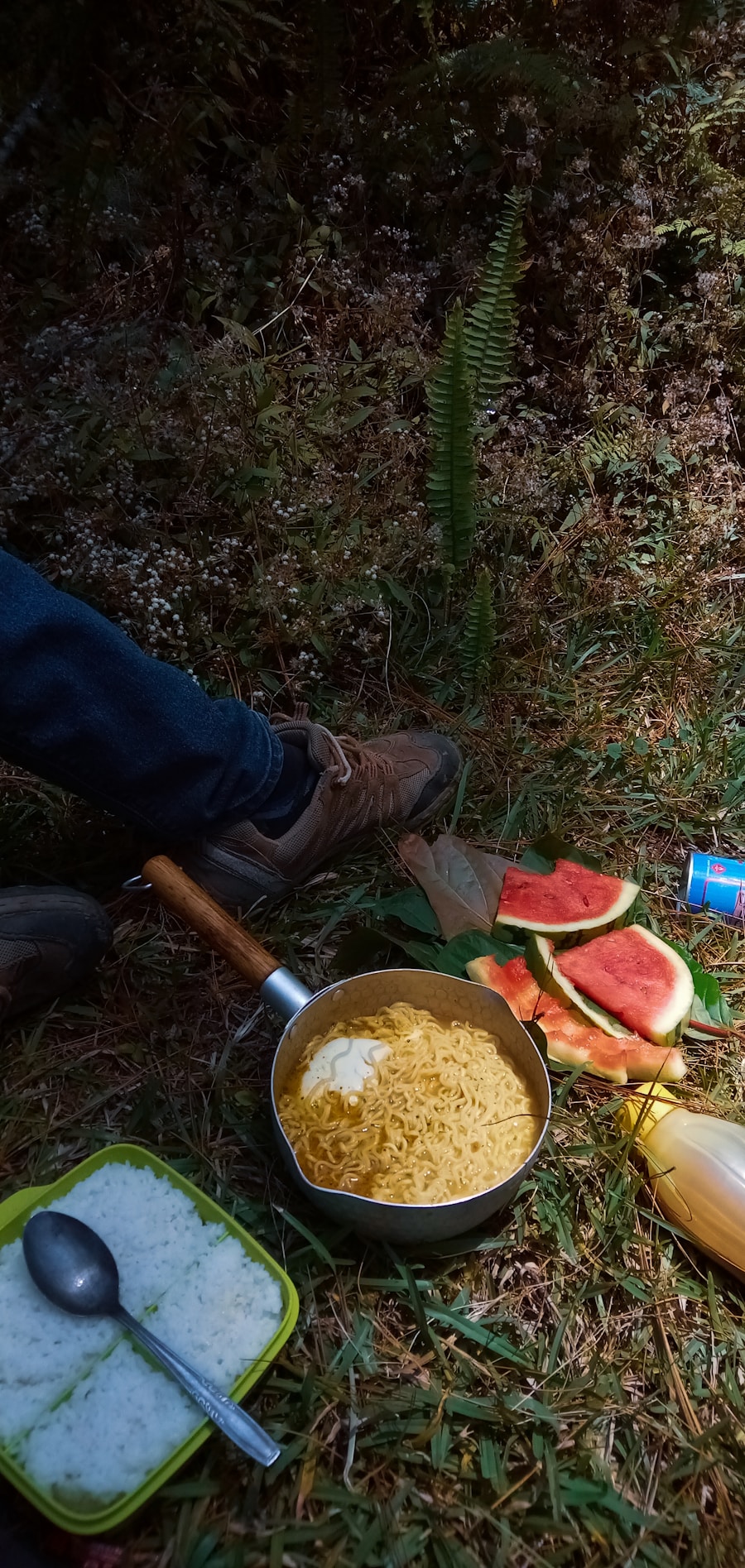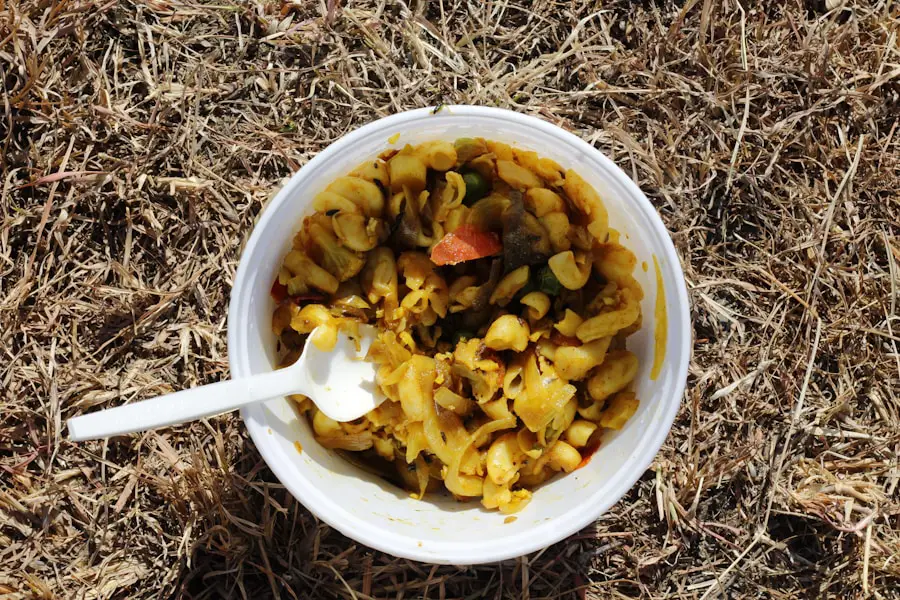Hiking is an exhilarating activity that allows individuals to connect with nature, explore new terrains, and enjoy the great outdoors. However, the physical demands of hiking can be taxing on the body, making it essential to maintain energy levels throughout the journey. This is where hiking snacks come into play.
Properly chosen snacks not only provide the necessary fuel to keep hikers energized but also contribute to overall well-being during strenuous activities. The right snacks can help prevent fatigue, maintain focus, and enhance the overall hiking experience. Moreover, hiking snacks serve a dual purpose: they are not just about sustenance but also about enjoyment.
The act of taking a break to savor a delicious snack amidst breathtaking scenery can elevate the hiking experience. Whether it’s a quick bite during a challenging ascent or a leisurely snack at a scenic overlook, these moments can create lasting memories. Therefore, selecting the right snacks is crucial for both physical performance and the enjoyment of the hike itself.
Key Takeaways
- Hiking snacks are important for providing sustained energy and preventing fatigue during outdoor activities.
- Nutritious and lightweight options like nuts, seeds, and dried fruits are ideal for hiking snacks.
- Homemade trail mix can be prepared with a variety of ingredients to suit individual taste and nutritional needs.
- Energy bars and protein-packed snacks are convenient options for quick and easy fuel on the trail.
- Dehydrated fruits and vegetables are lightweight, compact, and provide essential nutrients for hikers.
Nutritious and Lightweight Options
Lightweight Snack Options
Lightweight options such as nuts, seeds, and dried fruits are excellent choices because they are calorie-dense and easy to carry. For instance, almonds and walnuts are rich in healthy fats and protein, making them perfect for long hikes. A small handful can provide a significant amount of energy without adding much weight to a backpack.
Nutrient-Rich Seeds
Similarly, seeds like pumpkin or sunflower seeds offer a great source of magnesium and zinc, which are vital for muscle function and recovery.
Dried Fruits for Quick Energy
Dried fruits such as apricots or figs not only satisfy sweet cravings but also deliver natural sugars for quick energy. These nutritious options ensure that hikers remain fueled without the burden of heavy snacks.
Preparing Homemade Trail Mix

One of the most versatile and customizable hiking snacks is trail mix. Preparing homemade trail mix allows hikers to tailor their snack to their specific tastes and nutritional needs. The beauty of trail mix lies in its adaptability; it can include a variety of ingredients such as nuts, seeds, dried fruits, and even dark chocolate for a touch of sweetness.
By creating a personalized blend, hikers can ensure they have a snack that they genuinely enjoy while also meeting their energy requirements. To prepare an effective trail mix, start with a base of nuts like almonds, cashews, or pecans. These nuts provide healthy fats and protein that are essential for sustained energy.
Next, add in seeds such as chia or flaxseeds for an extra boost of omega-3 fatty acids. Dried fruits like cranberries or raisins can be included for natural sweetness and additional carbohydrates. For those who enjoy a bit of indulgence, incorporating dark chocolate chips or yogurt-covered raisins can enhance the flavor profile without compromising health benefits.
Mixing these ingredients in bulk allows hikers to portion out servings into resealable bags for easy access on the trail.
Energy Bars and Protein-packed Snacks
| Product | Calories | Protein (g) | Sugar (g) |
|---|---|---|---|
| Clif Bar | 250 | 9 | 21 |
| Kind Protein Bar | 250 | 12 | 8 |
| Larabar | 200 | 6 | 18 |
| RXBAR | 210 | 12 | 13 |
Energy bars have become a staple in the hiking community due to their convenience and portability. These bars are specifically designed to provide quick energy and often contain a balanced mix of carbohydrates, proteins, and fats. When selecting energy bars for hiking, it’s important to choose those with minimal added sugars and artificial ingredients.
Many brands now offer bars made from whole food ingredients that cater to various dietary preferences, including vegan and gluten-free options. In addition to commercial energy bars, homemade versions can be crafted using simple ingredients like oats, nut butter, honey, and protein powder. For example, combining rolled oats with almond butter and a touch of honey creates a chewy bar that is both satisfying and nutritious.
Adding in protein powder can enhance the protein content, making it an excellent post-hike recovery snack as well. These homemade bars can be cut into individual portions and wrapped for easy transport, ensuring that hikers have a reliable source of energy at their fingertips.
Dehydrated Fruits and Vegetables
Dehydrated fruits and vegetables are another fantastic option for hiking snacks due to their lightweight nature and long shelf life. Dehydration removes moisture from food, concentrating its flavors while preserving essential nutrients. This makes dehydrated produce an excellent choice for hikers looking for healthy snacks that won’t weigh them down.
Common dehydrated fruits include apples, bananas, and mangoes, while vegetables like kale chips or carrot sticks can provide a savory alternative. The appeal of dehydrated snacks lies not only in their convenience but also in their versatility. They can be eaten alone or mixed into trail mix for added flavor and texture.
For instance, adding dehydrated apple slices to a nut-based trail mix creates a delightful combination of sweet and crunchy elements. Additionally, dehydrated vegetables can be rehydrated with water during longer hikes to create a quick soup or side dish, providing both nourishment and hydration.
Hydration and Electrolyte Replenishment

Hydration: The Foundation of a Safe Hike
While snacks are crucial for maintaining energy levels on the trail, hydration is equally important for overall performance and safety during hikes. Dehydration can lead to fatigue, dizziness, and decreased physical performance, making it essential for hikers to drink water regularly throughout their journey.
The Limitations of Water: The Importance of Electrolytes
However, simply drinking water may not always be sufficient, especially during strenuous activities where electrolytes are lost through sweat. To combat this issue, hikers should consider incorporating electrolyte-replenishing drinks or snacks into their hiking regimen.
Electrolyte-Rich Options for Hikers
Electrolyte powders or tablets can be easily mixed with water to create a refreshing drink that helps restore lost minerals such as sodium, potassium, and magnesium. Additionally, certain snacks like coconut water or electrolyte-infused gummies can provide both hydration and replenishment in a convenient form. These options ensure that hikers remain hydrated while also maintaining optimal muscle function during their adventures.
On-the-Go Meal Ideas
For longer hikes where traditional meals may not be feasible, on-the-go meal ideas can provide substantial nourishment without the need for extensive preparation or cooking equipment. Wraps made with whole grain tortillas filled with nut butter and banana offer a satisfying combination of carbohydrates and protein that is easy to pack and consume on the move. Similarly, quinoa salad jars layered with vegetables, beans, and dressing can be prepared ahead of time and eaten cold during breaks.
Another excellent option is pre-made sandwiches using whole grain bread filled with lean proteins like turkey or hummus paired with fresh vegetables. These sandwiches can be wrapped tightly to prevent squishing in a backpack while providing a hearty meal that keeps hunger at bay during long treks. For those who prefer warm meals on cooler days, investing in an insulated food container allows hikers to carry soups or stews that can be enjoyed hot at lunchtime.
Tips for Storing and Packing Hiking Snacks
Proper storage and packing of hiking snacks are essential to ensure freshness and prevent spoilage during outdoor adventures. Using resealable bags or airtight containers helps protect snacks from moisture and air exposure, which can lead to staleness or spoilage over time. It’s advisable to portion out snacks into individual servings before hitting the trail; this not only makes them easy to grab but also helps control portion sizes.
Additionally, consider the temperature when packing snacks; items like chocolate may melt in warm weather if not stored properly. Keeping snacks in an insulated cooler bag or placing them in the center of the backpack—surrounded by other items—can help regulate temperature fluctuations. Lastly, always remember to pack out any trash or leftover packaging from snacks to preserve the natural beauty of hiking trails and minimize environmental impact.
By carefully selecting nutritious options, preparing homemade snacks, and ensuring proper storage techniques are followed, hikers can enhance their outdoor experiences while maintaining energy levels throughout their journeys.
When hiking the Appalachian Trail, it is important to consider what food to bring along for sustenance. One helpful article to check out is “Best Time to Travel to Lake Como: A Seasonal Guide”, which provides insights on the best times to visit Lake Como in Italy. Just like planning for a hike, timing is crucial when it comes to enjoying the beauty of this stunning destination. Additionally, becoming a travel agent in Texas, as outlined in this step-by-step guide, can also be a rewarding career path for those who have a passion for travel. And if you’re considering a trip to India, this guide offers valuable information on the best times to visit this diverse and vibrant country.
FAQs
What is the Appalachian Trail?
The Appalachian Trail is a 2,200-mile long hiking trail that stretches from Georgia to Maine, passing through 14 states along the way.
What kind of food should I eat while hiking the Appalachian Trail?
While hiking the Appalachian Trail, it’s important to consume high-energy, lightweight foods such as nuts, dried fruits, energy bars, jerky, and dehydrated meals. It’s also important to include a balance of carbohydrates, proteins, and fats in your diet.
How many calories should I consume while hiking the Appalachian Trail?
Hikers on the Appalachian Trail typically need to consume between 3,000 to 5,000 calories per day to maintain their energy levels and support their physical activity.
What are some popular food options for hikers on the Appalachian Trail?
Popular food options for hikers on the Appalachian Trail include instant oatmeal, trail mix, peanut butter, tortillas, tuna packets, ramen noodles, and dehydrated backpacking meals.
How do hikers on the Appalachian Trail store and prepare their food?
Hikers on the Appalachian Trail typically store their food in bear-resistant canisters or hang it in bear bags to protect it from wildlife. They also use portable stoves to cook dehydrated meals and boil water for hot drinks.
